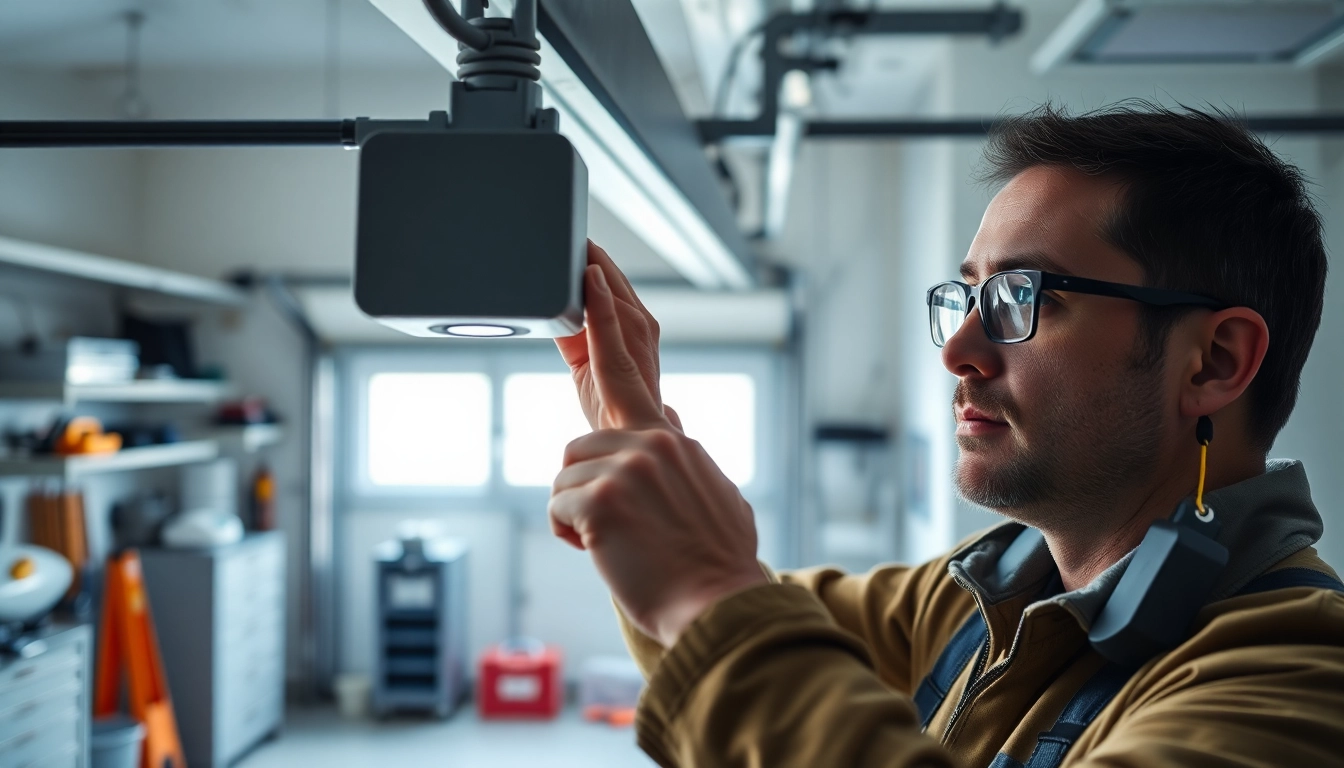Understanding Garage Door Sensor Mechanisms
What Are Garage Door Sensors?
Garage door sensors are essential safety devices designed to detect obstacles in the path of a closing garage door. They typically work with infrared beams; when the beam is disrupted, the sensors send a signal to the garage door opener to reverse the door’s operation. This innovation dramatically enhances user safety, as it prevents accidents and injuries that could occur if the door were to close on a person, pet, or property. Understanding these systems is crucial for homeowners who want to ensure their garage doors function correctly and safely. In addition, proper aligning garage door sensors is paramount for optimal performance.
Types of Garage Door Sensors
Garage door sensors generally fall into two categories: photoelectric sensors and mechanical sensors. Photoelectric sensors utilize infrared light beams to detect obstructions, while mechanical sensors often rely on physical pressure to identify when an object is in the door’s path. While both types serve the same purpose, photoelectric sensors are more common in modern garage door systems due to their effectiveness and reliability.
The Role of Sensors in Garage Door Safety
Garage door sensors play a pivotal role in ensuring the safety of the garage door system. Their primary function is to prevent accidents that can occur due to misaligned doors or unsuspecting obstacles. By employing these sensors, homeowners can avoid potential injuries to family members and pets, as well as damage to vehicles and other valuable items stored in the garage. Moreover, garage door sensors can help in compliance with safety regulations, thereby providing peace of mind for users.
Common Issues with Garage Door Sensors
Signs of Misalignment
Misalignment of garage door sensors can manifest in several ways. One of the most noticeable signs is when the garage door refuses to close completely. In some cases, the door may reverse automatically just inches from the ground. Other indicators include blinking lights on the sensor or opener, or a non-responsive door after pressing the remote. Recognizing these signs early on can help save time and reduce costly repairs.
Troubleshooting Basic Sensor Problems
When faced with malfunctioning garage door sensors, troubleshooting can often help address the issue without professional assistance. Start by inspecting the sensors for any visible obstructions such as dirt, cobwebs, or snow. Clear the lens and ensure that both sensors face each other directly. Check the alignment—adjust if necessary, as even slight deviations can disrupt the signals. Additionally, examine the wiring for any damage and verify that the electrical connections are secure. Many of these issues can be resolved with a quick inspection and minor adjustments.
Maintaining Sensor Conditions
Regular maintenance of garage door sensors ensures their optimal functionality. Homeowners should adopt a routine cleaning schedule for the sensor lenses, using a soft cloth to avoid scratching. It’s also important to verify that the sensors remain free of dust and debris, which can impede performance. Periodic checks for electrical integrity and proper alignment will further contribute to the longevity of the sensors, minimizing the likelihood of future issues.
Best Practices for Aligning Garage Door Sensors
Tools Required for Alignment
To effectively align garage door sensors, several tools may be necessary. Commonly required tools include a screwdriver, a level, and a tape measure. A multimeter might be useful for checking the electrical connections, while safety goggles can protect the eyes during the process. Having these tools on hand can facilitate a smoother alignment process with minimal disruption.
Step-by-Step Alignment Procedure
Aligning garage door sensors involves a systematic approach to ensure they function correctly. The following steps outline a general procedure:
- Begin by turning off the garage door opener to prevent accidental activation.
- Locate the sensors and assess their current alignment.
- Use the tape measure to determine the distance from the ground to the sensor. Ensure both sensors are at the same height.
- Adjust the sensors as needed to ensure they face directly toward each other, using a level to ensure they are properly aligned.
- Secure the sensors in place with screws and double-check that the mounts are tight.
- Reconnect power to the garage door opener and test the function of the sensors.
This alignment procedure can enhance sensor responsiveness and reliability.
Safety Considerations During Installation
Safety should be the highest priority when modifying garage door sensors. Always ensure the garage door opener is powered down before beginning any work. Wear appropriate safety gear, such as gloves and goggles, to protect against potential hazards. Additionally, consider securing the area to prevent any accidental triggering of the garage door while working. These precautions can help avoid accidents and ensure that the installation or adjustments proceed safely.
Advanced Sensor Technologies and Innovations
Integration of Smart Technologies
With technological advancements, garage door sensors are evolving, integrating smart technologies that enhance their functionality. Many modern systems now connect to IoT (Internet of Things) networks, allowing users to monitor and control garage doors via smartphones or smart home systems. This integration not only improves convenience but also provides real-time alerts regarding door status and potential malfunctions, aiding in proactive maintenance.
Comparison of Traditional and Advanced Sensors
When comparing traditional and advanced garage door sensors, key differences include the methods of operation, user interface, and integration capabilities. Traditional sensors typically rely on more basic functions and manual operation, which can limit user experiences. In contrast, advanced sensors benefit from advanced processing capabilities, automated alerts, and remote access, offering enhanced usability and responsiveness. As consumer preferences lean towards smarter home solutions, these advances in sensor technology are vital for the modern homeowner.
Future Trends in Garage Door Sensor Development
The future of garage door sensors looks promising, with trends pointing towards greater intelligence and connectivity. Emerging technologies are likely to focus on artificial intelligence integration for predictive analysis, enhanced security protocols, and better obstacle detection capabilities. Additionally, the growth of smart home ecosystems is expected to shape how these sensors interact with other devices, leading to a more unified and efficacious home automation experience.
Evaluating Sensor Performance and Reliability
Key Performance Indicators for Garage Door Sensors
To ensure garage door sensors function effectively, it’s important to evaluate them against several key performance indicators (KPIs). These include response time, accuracy in detecting obstacles, alignment stability, and failure rates. Regularly assessing these metrics can assist homeowners in identifying potential issues early and address them proactively, ultimately prolonging the sensor’s lifespan.
Measuring Effectiveness of Sensor Alignment
Measuring the effectiveness of sensor alignment can be achieved through practical testing methods. One common approach is to manually obstruct the sensor path while observing the door’s behavior. The door should halt or reverse its motion as intended. Additionally, monitoring the blinking lights indicator can provide real-time feedback on the alignment status. Regular testing and evaluation ensure that the sensors remain in optimal condition for safe operation.
Long-Term Maintenance Strategies for Consistent Performance
Long-term maintenance is essential for ensuring that garage door sensors perform reliably over time. Strategies should include scheduled inspections—ideally biannually—where connections, wiring, and alignment can be verified. Furthermore, adopting a cleaning routine that targets sensor lenses and surrounding areas can mitigate the buildup of debris. Keeping a written log of maintenance activities and sensor performance metrics will help track the system’s efficiency and prompt timely interventions as needed.


